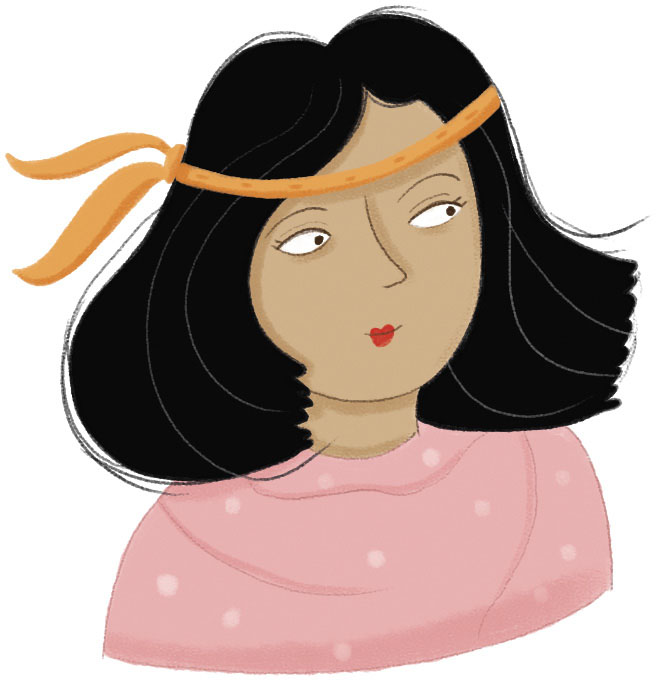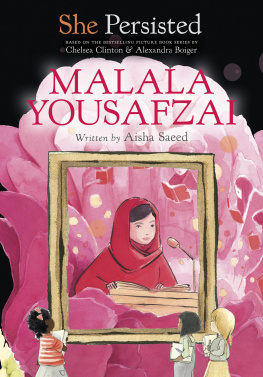Introduction
The course of history is packed with stories of women overcoming odds, defying expectations, and shattering stereotypes. Yet, all too often, their contribution has been overlooked, underplayed, or just forgotten.
Many cultures have believed (or still believe) that women do not need an education, cannot be trusted with leadership, are physically inferior, and are intellectually weak. Men have been privileged, and this means that they have been the worlds default decision-makers and history writers.
Women, however, have been achieving greatness even when everything seemed against them. The adventurers, scientists, leaders, athletes, and artists in this book are by no means the definitive list of female history-makers, nor are they perfect and without fault, but they are pioneers who stood out, made a difference, and proved without a doubt that they were just as capable as men. Their contributions, both to their field and as an inspiration to others, are worthy of celebration. And that is what this book aims to do.
Chapter 1
Leaders and Activists

In early cultures, women often had equal status to menthey could be warriors, priestesses, and leaders. But some ancient civilizations, such as Greece and Rome, were founded on different principles. They believed, quite wrongly, that men were natural leaders and that women should stay at home. This harmful point of view persisted for centuries.
Of course, women are just as capable as men and always have been. This chapter introduces strong and clear-sighted queens, politicians, businesswomen, and activists. They have led countries, companies, communities, and campaigns.
As well as doing their job, many of these women have faced and tackled prejudice. Some worked their way up from poor, disadvantaged backgrounds. They all succeeded against the odds.
These activists and politicians were determined to improve the world they lived in. And they were committed to do whatever it took to make changes.
All these women believed in themselves, worked hard to achieve their goals, and never gave up. Through their efforts and example, they inspired more women to follow their lead. Many of them left the world a safer, fairer place than they found it.
Boudicca
(c.30c.60 ce )

Boudicca was the queen of a Celtic tribe called the Iceni. In 60 ce she led more than 100,000 fellow Celts against the Romans, who had come to capture Britain. The warrior queen had many successes before the Romans defeated her.
Cleopatra
(c.6930 bce )

Cleopatra was Egypts queen when the Roman Empire was at its height. Her deals with Roman leaders Julius Caesar and Mark Antony protected Egypt from invasion. She is one of historys most powerful women.
Jingu
(c.170c.269 ce )

There are countless legends about Empress Jingu of Japan. She is said to have fought alongside the samurai and conquered Korea. She was also believed to be a shaman, who could listen in to the spirit world. In the 1800s, she became the first woman to appear on a Japanese banknote.
Benazir Bhutto
Politician
(19532007)

Benazir Bhutto was born in Karachi, Pakistan. Her country was just six years oldit had been formed in 1947 from the Muslim regions of what had been British India.
Benazirs father, Zulfikar Ali Bhutto, was a wealthy politician and landowner. In 1967 he founded the Pakistan Peoples Party (PPP) and in 1971 he was elected prime minister.
In 1968 Benazir had gone to Harvard University in Massachusetts, USA. After she graduated she moved to the United Kingdom to study philosophy, political science, and economics (PPE) at Oxford University.
In 1977 Benazir returned home to work for her father, who had just been re-elected. However that July the head of the army, General Zia, overthrew the Pakistani government and made himself president. He had Zulfikar executed in 1979, while Benazir and her mother were being held in prison nearby.
After her fathers death, Benazir led the PPP and worked with other parties to end military rule. She was imprisoned several times. In 1984 she moved to London, UK. From there she campaigned worldwide for Pakistans return to democracy.
In 1985 Benazir visited Pakistan to bury her younger brother. She was held under house arrest until she flew back to Europe. The following year she returned for good. Hundreds of thousands of people took to the streets to welcome Benazir homethe crowds were so thick that her motorcade took more than nine hours to drive 12 km (eight miles).

In 1988 General Zia called an election. Benazir won and became the first female prime minister of a Muslim country. After just two years in power she was forced to step down because of accusations of illegal activity. In 1993 Benazir was voted back in. Three years later she was removed again. Benazir never served a full, five-year term as prime minister, so she struggled to deliver all she had promised. She built new schools, connected thousands of villages to electricity, and gave the press its freedom. But she had hoped to do much more.
A people inspired by democracy, human rights, and economic opportunity will turn their back decisively against extremism.
In 1999 there was another military takeover in Pakistan. Benazir lived in exile in Dubai, United Arab Emirates, until democratic elections were reintroduced in 2007. Two bombs went off in the crowd that greeted her return, killing 149 people and injuring 402. Benazir was unharmed, but she was killed two months later by a suicide bomber. Mourners scattered rose petals over her coffin as a sign of their love.
Harriet Tubman
Abolitionist, Army Scout, and Suffragist
(c.18201913)

Born into slavery in Maryland, USA, Harriet Tubman worked from childhood. Over the years she was a nanny, cook, farmhand, and woodcutter. In 1849 she made the dangerous 145-km (90-mile) journey to Pennsylvania, a free state where slavery was banned. Even here Harriet was not safe. As a runaway slave she couldby lawbe captured and returned to her owner.
In 1850 Harriet went back to Maryland to rescue members of her family. She repeated the journey more than 13 times to lead other African-American slaves to freedom. Using a secret route to Canada known as the Underground Railroad, Harriet rescued more than 70 slaves, putting her own life in great danger.
I was the conductor of the Underground Railroad for 8 years, and I can say what most conductors cant say I never ran my train off the track and I never lost a passenger.


















